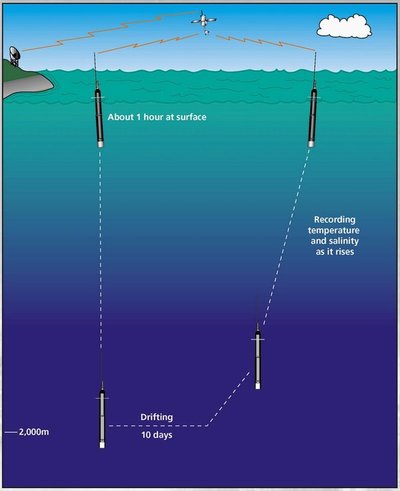September 19, 2000
‘Argo’ on quest for better climate forecasts
Satellites and instruments that monitor conditions at the sea surface — such as the moored buoys across the tropical Pacific used to detect changes preceding 1998’s devastating El Niño — have greatly improved climate forecasts in recent years.
A University of Washington oceanographer is in Washington, D.C., today for a press conference announcing the first phase of a program that could take climate forecasting to the next level of accuracy by routinely making measurements up to a mile beneath the sea surface at points across all the world’s oceans.
UW oceanographers and engineers are adapting and deploying more than half of the approximately 45 subsurface drifters expected to be in the water by the end of the year under the Argo program, named after the ship used by the mythological Greek hero Jason. Spearheaded with $4 million in initial support from the National Oceanic and Atmospheric Administration and Office of Naval Research, Argo is an ambitious program to deploy 3,000 specialized floats around the world. The United States has committed to provide at least a third of the floats during the next three years. Other countries, including Japan, Canada and Australia, also will launch floats.
“A global network of these floats would make it possible to understand the ocean’s impact on climate cycles and to improve forecasts of climate conditions,” says Stephen Riser, UW professor of oceanography.
NOAA has selected the UW, Scripps Institution of Oceanography and Woods Hole Oceanographic Institution to build the first floats and arrange for their deployment. All three institutions have successfully used similar floats in recent years for individual research projects and as a pilot for Argo. For example, Riser has used the floats in the Western Atlantic to measure the water temperature and velocity of currents in the ocean under hurricanes in an effort to determine how the ocean fuels or defuses a storm’s punch.
The floats are mechanical devices with electronic sensors and satellite antennas that drift about a mile below the sea surface and, every 10 days, ascend through the water collecting temperature and salinity data that they transmit via satellites to land-based laboratories. The floats can operate independently through their life of four to five years.
The UW launched its first five floats under the Argo program in June. The floats can be deployed from research vessels, container ships or even aircraft. Riser has arranged for four or five more to be set adrift in the South Pacific this month and next, and another eight to 16 in the Atlantic in November and December.
###
For more information:
Stephen Riser, leave messages today and before 10 a.m. EDT on Wednesday at the Washington Plaza Hotel, (202) 842-1300; Riser returns to Seattle Wednesday afternoon, (206) 543-1187, riser@compass.ocean.washington.edu
Argo Web site:
http://www-argo.ucsd.edu/



